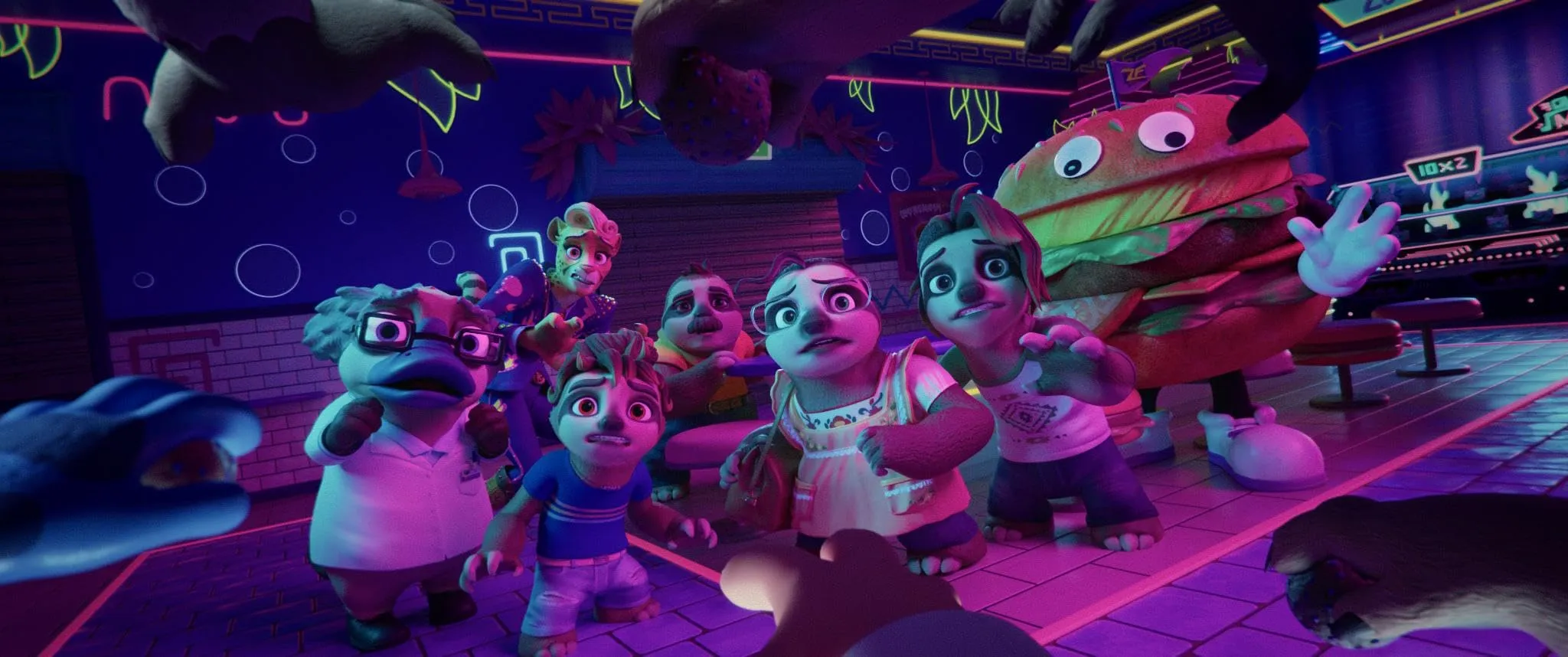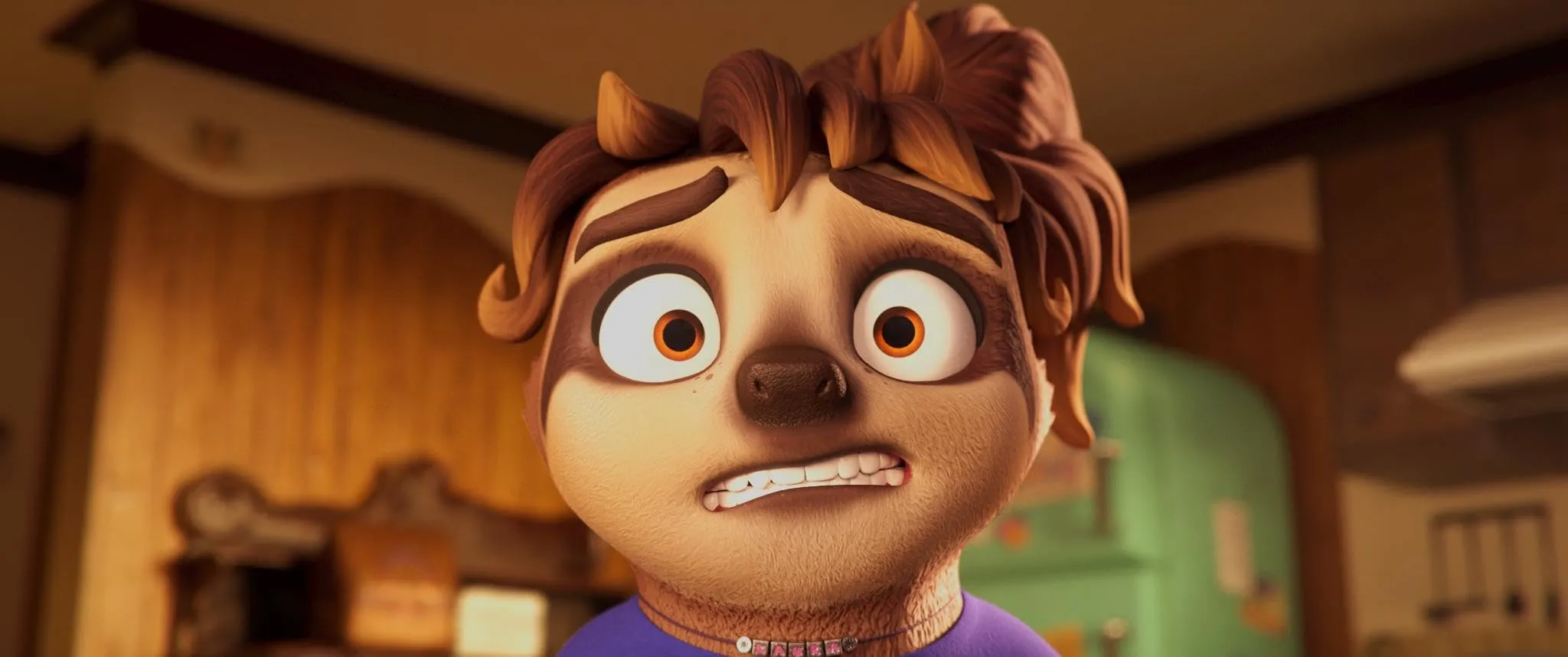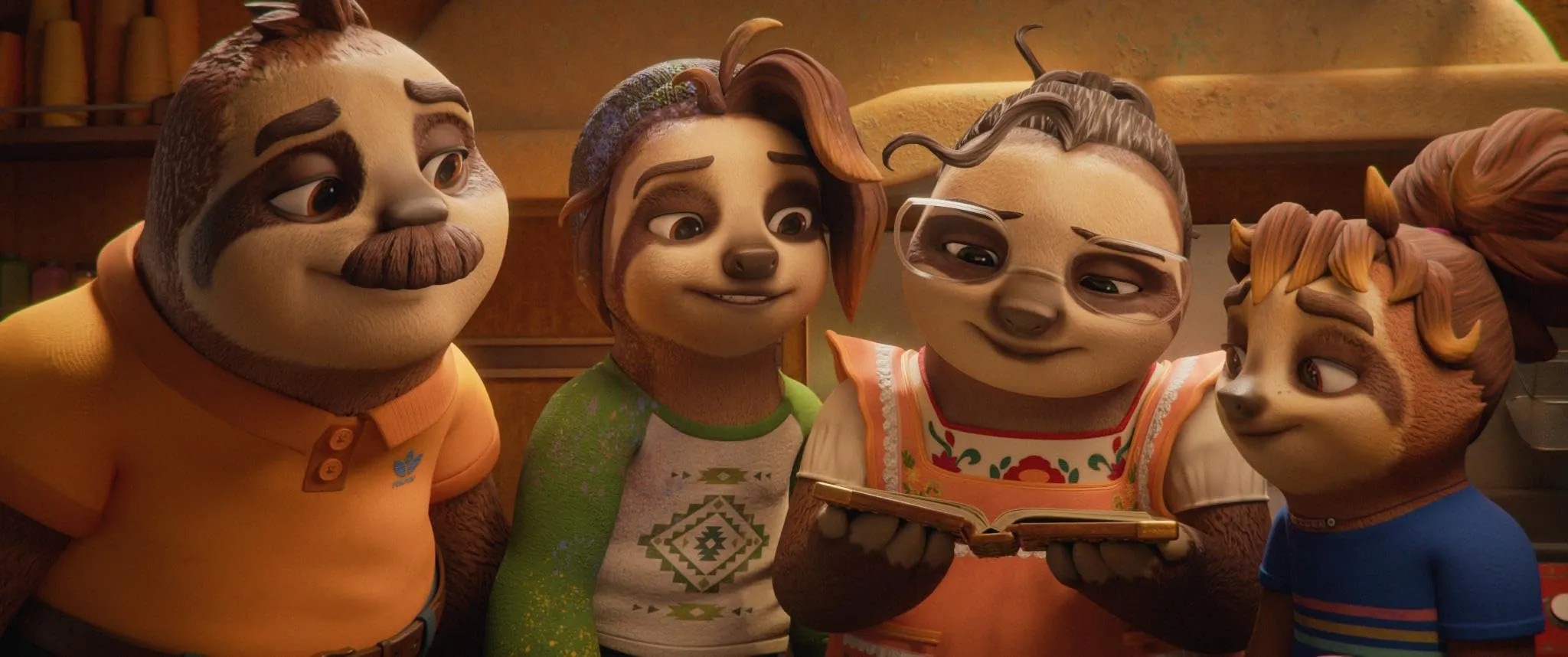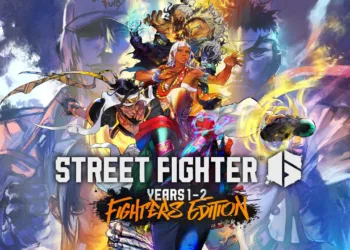In the film, the Flores family lives a measured existence rooted in longstanding traditions. Their cherished restaurant and family recipe book stand as symbols of cultural heritage, offering insight into a lifestyle that prizes connection and thoughtful living.
A sudden storm shatters their secure world by erasing their home and restaurant, leaving only their food truck intact.
This incident forces them into the urban setting of Sanctuary City, where life accelerates and values shift. Here, their time-honored methods are put to the test as they traverse a setting that prizes speed and efficiency, a sharp contrast to their once-familiar ways.
The emergence of Dotti Pace introduces a competitive challenge. Her fast-food enterprise represents a departure from the family’s measured approach, intensifying internal tensions as each member reacts differently to their new reality.
The film employs these narrative shifts to illustrate the collision between inherited customs and modern urban pressures.
It offers insight into cultural transitions that resonate with international audiences, prompting reflection on the persistence of heritage amid rapid change while questioning the sustainability of a fast-paced lifestyle in a world rich with diverse legacies.
Cross-Cultural Character Portraits
The film presents its characters as embodiments of differing cultural philosophies. Laura stands out as a spirited instigator whose energy challenges inherited customs.
Her eagerness to immerse herself in a world marked by rapid consumer habits and a dynamic food culture creates an intriguing counterpoint to her family’s deliberate pace.
Her flirtation with fast-food trends provides a window into the effects of global consumerism, offering a perspective that questions how traditional values can be maintained amid rapid lifestyle shifts.
Gabriella serves as the anchor of the familial legacy. Entrusted with safeguarding a treasured recipe book, she represents the preservation of a cultural heritage that has withstood the test of time.
Her difficulties in adjusting to the urban setting, coupled with a personal struggle with memory loss, illuminate the tension between holding on to the past and adapting to an environment that prizes immediacy.
The evolving relationship between Gabriella and Laura highlights the intricate dance between generational differences, prompting viewers to consider how cultural memory can be both a source of strength and a burden in times of transformation.
Luis and Mani provide complementary reflections on these themes. Luis’s measured efforts to rebuild and sustain familial traditions underline a pragmatic approach to change, while Mani’s subtle humor and grounding presence ensure that the narrative retains moments of levity amid the tension.
Together, they offer a perspective that balances the earnest desire for continuity with the inevitability of progress.
Dotti Pace introduces a stark contrast, representing an enterprise driven by rapidity and commercial appeal.
Her motivations and methods, firmly rooted in a culture that prizes speed and profitability, serve as a foil to the familial commitment to enduring cultural practices.
Her role raises questions about the impact of fast-paced commercial models on community values and personal identity, inviting an open reflection on how modern influences reshape traditional narratives.
Cultural Themes in Transition
The film presents a stark contrast between long-held customs and the influence of rapid urban change. The tension between cherished family traditions and the pull of contemporary living is at the forefront.
Traditional culinary practices and the symbolic recipe book serve as anchors for a heritage that prizes careful preparation and mutual support. Food emerges as a symbol of cultural continuity, offering a means to remember shared values even as modern influences press in.
A key conflict appears in the differing views held by Laura and her mother. Laura’s embrace of fast-paced innovation challenges the steady ways of her upbringing.
This friction between youthful ambition and established practices brings to light the struggles that occur when personal dreams meet inherited responsibilities.
The dynamic between the two generations reflects a universal theme found across cultures: the gap that sometimes exists between those who honor tradition and those who seek rapid change.
The narrative further integrates elements of Latino culture, blending traditional customs with the modern demands of city life. The film uses familiar cultural markers to anchor its characters in a specific heritage while also reaching out to an audience that spans many nations.
The immigrant narrative is present in the family’s experience of settling in an unfamiliar environment, where long-held customs meet a society driven by efficiency and novelty.
Amid loss and forced reinvention, the story underscores the capacity to rebuild and the quiet strength found in persistence.
The family’s struggle to adapt highlights lessons about maintaining cultural roots even when faced with overwhelming change.
The film suggests that heritage and modern life are not mutually exclusive, offering a space where both influence the characters’ actions in unexpected ways, leaving viewers to ponder how diverse traditions can shape responses to a rapidly shifting world.
Visual Style and Animation: A Cross-Cultural Canvas
The film employs a CGI approach that brings to mind a handmade, frame-by-frame method, lending a tactile feel reminiscent of handcrafted models.
This style mirrors the deliberate pace observed in natural sloth movement, providing an organic quality that contrasts with the frenetic energy of digital slickness common in many contemporary productions.
The visual palette distinguishes the warmth of rural settings from the brisk urban scenery. Earthy tones dominate the family’s native backdrop, reinforcing the cultural heritage embedded in their traditions, while cooler, more clinical hues mark the city’s accelerated rhythm.
This careful modulation of color serves as an indicator of environmental and emotional shifts within the narrative, subtly invoking regional artistic traditions that echo indigenous patterns and culinary heritage.
The film’s visual storytelling is attentive to small details that enrich its cultural commentary. Background elements carry symbolic references—motifs reminiscent of traditional textiles and culinary paraphernalia emerge throughout the scenes, linking the characters’ personal history to their cultural roots.
This integration of subtle design elements with narrative developments creates moments where the visuals and the story operate in a coordinated fashion.
Such coordination challenges the viewer to consider how artistic choices in animation can articulate complex themes like identity and cultural preservation, offering a layered experience that sparks reflection on the interplay between modern urban dynamics and traditional life.
Sound, Music, and Voice Performances: Echoes of Cultural Expression
The film’s sound design and musical score contribute significantly to its portrayal of cultural heritage.
The score incorporates traditional motifs that echo the family’s origins and accent the shifts between their familiar, measured world and the brisk pace of urban life.
Specific sound effects underscore moments of humor and sorrow, crafting an audio landscape that complements the visual storytelling. The blend of acoustic and electronic elements creates a soundscape that reflects both inherited traditions and the influence of modernity.
The voice cast delivers performances that imbue each character with distinct personality and cultural nuance.
The vocal portrayal of Laura captures her restless energy, while Gabriella’s measured tone reinforces her role as a guardian of familial lore.
The actors articulate subtle emotional shifts, enhancing the film’s narrative layers and inviting viewers to consider the interplay of personal identity and cultural legacy.
Audio elements integrate seamlessly with the animation, reinforcing the film’s overall atmosphere.
Musical transitions and carefully placed sound cues mirror visual changes, such as the contrast between the rustic setting of the family’s past and the streamlined energy of the city.
This close relationship between sound and image invites a deeper reflection on how cultural influences shape both the sensory and narrative aspects of the film.
Storytelling Techniques and Overall Impact
The film constructs a layered narrative, beginning with measured introductions of its characters before shifting to brisk, urban sequences charged with activity.
This pace creates a tension that separates quieter, comedic moments from scenes filled with weighty dramatic turns. The narrative skillfully mixes playful interactions with scenes of emotional gravity, drawing the audience into both light and reflective moments.
Carefully timed humor punctuates the film’s more intense segments, with brief comic relief providing a counterpoint to scenes of personal struggle.
The family recipe book and modest food truck emerge as recurring images that serve as anchors to a storied cultural past.
These elements mark a clear contrast between a way of life rooted in tradition and the demands imposed by an unfamiliar urban rhythm.
They act as symbols of personal identity and community heritage, inviting viewers to consider how deeply cultural roots influence life choices.
The film’s structure leaves a lasting impression through its coordination of narrative and visual elements. Its mixture of gentle wit and poignant storytelling offers viewers a reflective space, urging an examination of personal change in relation to cultural expectations.
This interplay creates an experience that questions established ideas about heritage and progress without offering an easy resolution.
The Review
The Sloth Lane
This film provides a thoughtful portrayal of cultural conflict and personal evolution, mixing humor with reflective moments that question tradition and modern life. Its deliberate pacing and symbolic visuals create an engaging experience, leaving an impression that invites further reflection.
PROS
- Distinct visual style that echoes traditional animation techniques.
- Deep cultural context with rich symbolism.
- Engaging character dynamics and intergenerational conflicts.
CONS
- Uneven pacing in certain segments.
- Some characters and subplots feel underdeveloped.


















































